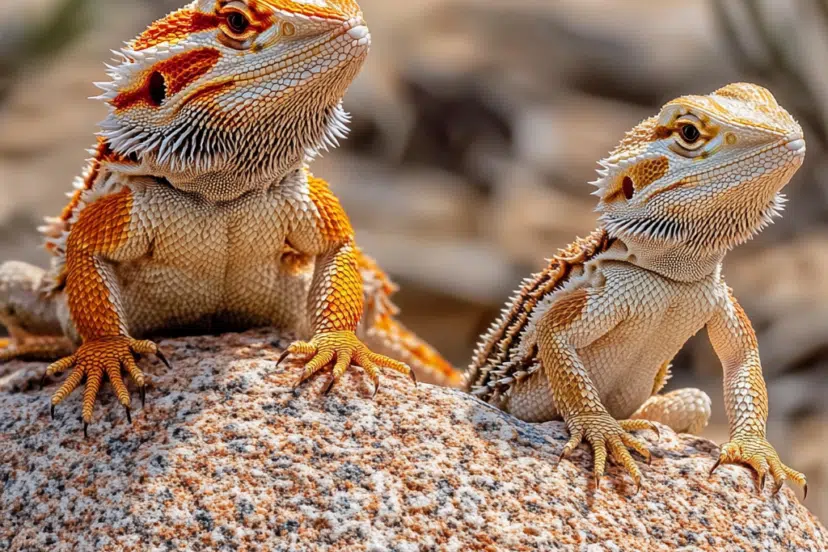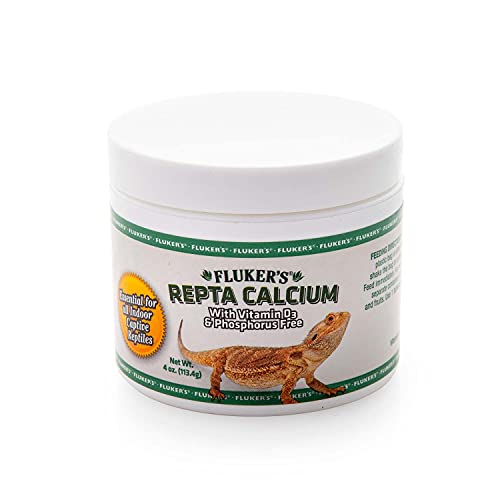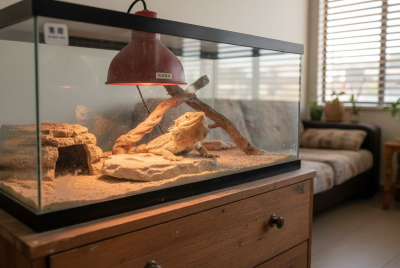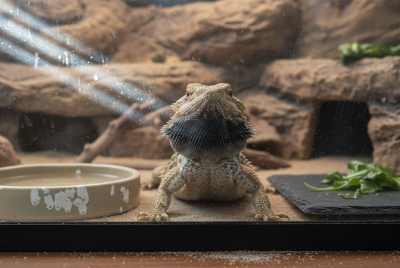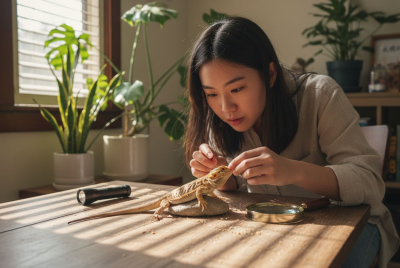Adult vs. Juvenile Bearded Dragons – A Complete Care Guide
Bearded dragons are one of the most popular pet reptiles, loved for their friendly temperament and unique behaviors. But whether you’re caring for an adult or a juvenile bearded dragon, their needs vary significantly at different stages of life. In this guide, I’ll explore how to care for both adult and juvenile bearded dragons, and what you need to keep in mind as your dragon grows and matures.
Why Knowing the Differences Matters
Caring for a bearded dragon is a rewarding experience, but as they transition from juvenile to adult, their care requirements change. Understanding these differences is essential to ensure their health, growth, and happiness. Whether it’s feeding, habitat setup, or behavior, knowing how to adapt your care can make all the difference.
Physical Differences Between Adult and Juvenile Bearded Dragons
The most obvious difference between adult and juvenile dragons is their physical appearance. However, there are subtle changes that happen as your dragon matures.
Size and Growth Rates
Juvenile bearded dragons grow quickly. A hatchling is about 4-5 inches long, but by the time they reach adulthood (around 18-24 months), they can grow to 18-24 inches. This rapid growth means their space and diet requirements will need regular adjustments as they age.
Coloration and Skin Texture
Juvenile dragons often have more vibrant coloration, while adults can develop more muted or earthy tones. As they age, their skin also thickens and becomes rougher in texture. This is a natural part of aging and serves as protection in the wild.
Behavior Differences Between Juveniles and Adults
Behaviorally, there are notable differences between juvenile and adult bearded dragons that affect how they interact with their environment and you.
Activity Levels and Playfulness
Juveniles are much more active and playful compared to adults. They will often explore their habitat, climb, and run around more frequently. Adults, on the other hand, tend to be more sedentary and enjoy basking for long periods, conserving their energy.
Territorial vs. Non-Territorial Behavior
Juvenile dragons are generally less territorial and more social. As they reach adulthood, however, males, in particular, may become more territorial, displaying behaviors like head bobbing and beard darkening to assert dominance.
Diet Differences Between Adult and Juvenile Dragons
One of the most significant changes as a bearded dragon grows is in their diet. Their nutritional needs shift as they transition from juvenile to adult.
Feeding Frequency and Food Types
Juveniles need frequent feedings, typically 3-5 times a day, with a diet that’s heavy on protein-rich insects like crickets and dubia roaches. As they age, their diet shifts, and adults should be fed primarily vegetables (about 80% of their diet), with insects offered only 2-3 times per week.
Nutritional Needs as They Grow
While juveniles require protein for rapid growth, adults need more fiber and leafy greens to support their metabolism and prevent obesity. Popular greens like collard greens, mustard greens, and dandelion greens should make up the bulk of an adult dragon’s diet.
Health Considerations for Adults and Juveniles
Bearded dragons are generally hardy reptiles, but they have different health vulnerabilities at each stage of life.
Common Health Issues in Juveniles
Juvenile dragons are more prone to metabolic bone disease due to rapid growth and improper calcium levels. Providing a UVB light and calcium supplements is crucial to prevent bone weakness and deformities during their growth phase.
Preventive Care for Adults
For adults, the main health concern is obesity, especially if they continue to consume too many insects as they age. Regular vet check-ups and keeping a close eye on their weight will help ensure they stay healthy.
Tank Requirements for Adult vs. Juvenile Bearded Dragons
As your bearded dragon grows, so should their tank. A properly sized enclosure is key to their well-being.
Tank Size Adjustments as They Grow
Juveniles can start in smaller enclosures, around 20-40 gallons, but adults need much more space—ideally 75-100 gallons. As they grow, their need for space to move, explore, and bask will increase.
Substrate and Environment Setup
Juveniles often do best with paper towels or reptile carpet as a substrate, since they’re less likely to accidentally ingest it. As adults, you can introduce more naturalistic substrates like slate tile or reptile-safe sand, as they’re better able to avoid impaction.
Handling and Socializing Adult and Juvenile Dragons
Both juvenile and adult dragons can enjoy being handled, but their tolerance and reactions can differ.
Best Practices for Handling Juveniles
Juvenile bearded dragons are more energetic and curious but can also be a bit skittish. Handle them gently and frequently to get them accustomed to human interaction. Short, daily sessions are best.
How Adult Dragons Respond to Handling
Adult dragons are typically more docile and tolerant of handling. They’re less likely to fidget, making them easier to handle for longer periods. However, they still appreciate calm, gentle handling to avoid stress.
Lighting and Temperature Differences for Juveniles and Adults
Lighting and temperature are crucial for both adult and juvenile dragons, but the requirements may vary slightly.
UVB and Heat Lamp Adjustments For Juveniles and Adults
Juveniles need more intense UVB lighting to support their rapid growth and calcium absorption. As adults, they still require UVB, but the intensity and exposure can be slightly reduced. UVB bulbs should be replaced every 6-12 months to ensure effectiveness.
Day and Night Temperature Requirements
The basking area should be around 95-110°F for juveniles, while adults are comfortable with slightly lower temperatures, around 90-100°F. The cool side of the tank should remain between 75-85°F for both age groups, while nighttime temperatures can drop to around 65-75°F.
Shedding: How It Differs for Juveniles and Adults
Shedding is a natural process, but it occurs more frequently in juveniles than in adults.
Juvenile Shedding Frequency
Since juveniles grow rapidly, they tend to shed every few weeks. During shedding, they may become more irritable or stop eating for a short time. Misting them and providing humidity helps ease the process.
Signs of Adult Shedding Issues
Adults shed less often, but if they have trouble shedding, it can lead to retained skin, particularly around the toes and tail. Regular baths and careful monitoring can help prevent shedding issues.
Breeding Considerations for Adults and Juveniles
If you plan to breed bearded dragons, it’s important to know when they’re ready and how to care for them afterward.
Maturity and Timing
Bearded dragons typically reach sexual maturity around 12-18 months. Breeding should only be done once dragons are fully grown to avoid health risks for the female.
Special Care for Gravid Females
If a female becomes gravid (pregnant), she’ll need extra calcium and a laying box. After laying eggs, she’ll require extra care and attention to recover her strength.
Conclusion: Caring for Bearded Dragons Through All Stages
Whether your bearded dragon is a tiny juvenile or a full-grown adult, understanding their unique needs at each stage of life is essential. As they grow, their diet, tank requirements, behavior, and health concerns will change. By providing the right care and environment, your bearded dragon can thrive, stay healthy, and be a beloved part of your life for many years to come. Remember to adjust their habitat, nutrition, and handling practices as they transition from curious juveniles to relaxed adults.
FAQs
- How often should I feed a juvenile vs. an adult bearded dragon?
Juvenile dragons need to be fed 3-5 times a day, with a diet focused on protein-rich insects. Adults should be fed primarily vegetables, with insects offered 2-3 times a week. - What size tank should I use for a juvenile vs. an adult bearded dragon?
Juveniles can start in a 20-40 gallon tank, but adults need a much larger tank, at least 75 gallons, and ideally closer to 100 gallons for ample space. - Do juvenile bearded dragons shed more frequently than adults?
Yes, juveniles shed every few weeks as they grow rapidly. Adults shed less often, typically a few times a year. - How should I handle a juvenile bearded dragon compared to an adult?
Handle juveniles gently and for short periods to get them used to human interaction. Adults are generally more docile and can tolerate longer handling sessions. - Do adult bearded dragons need different lighting than juveniles?
Both need UVB lighting, but juveniles may require more intense UVB exposure to support growth. Make sure to adjust the heat and UVB levels based on age and size.
By recognizing the distinct needs of juvenile and adult bearded dragons, you can ensure that your pet stays healthy and happy throughout its life stages.

